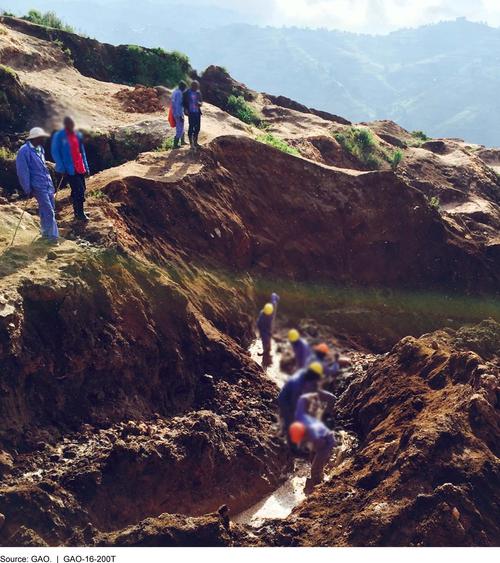Capacitor Maker’s Solution to Eliminate a Conflict Mineral from Its Supply Chain
Few companies have a bigger stake in sourcing conflict-free tantalum than electronic component maker KEMET, so it went to establish an entirely closed-loop supply chain with trusted partners.
January 8, 2016
The so-called 3TG minerals -- tin, tungsten, tantalum, and gold -- are some of the most needed raw materials in manufacturing but have become the most perplexing to obtain. Much of the minerals originate from the Democratic Republic of Congo (DRC) and surrounding region, the sale of which funds the warlords and armed groups that control the mines, hence the term “conflict minerals.” A federal law enacted in 2010 is trying to stem the trade of conflict minerals by requiring companies to first investigate their mineral supply chains and report conflict sources and then move toward ethical sourcing.
For Greenville, S.C.-based electronic component maker KEMET, few companies have a bigger stake in sourcing conflict-free tantalum. Forty-six percent of KEMET’s revenue comes from sales of its tantalum capacitors, making the manufacturer one of the world’s largest users of the mineral. The largest deposits of coltan ore, from which tantalum is extracted, are located in the DRC. In an interview with Design News, KEMET CEO Per Loof said acquiring tantalum has always been a problem, but it became an ever bigger challenge during the global recession in 2008.

Miners work a mine for tantalum-rich ore in the Democratic Republic of Congo.
(Source: US Government Accountability Office)
“Tantalum powder suppliers kept raising prices, seemingly unaware of the world around them,” Loof noted. “We had to figure something out. The DRC no longer was an option. Customers did not want products with raw materials originating from the DRC -- some even said they did not want ‘blood tantalum’ capacitors.��”
To cut down on the amount of conflict minerals used by industry, Section 1502 of the Dodd-Frank Consumer Protection Act requires companies to submit disclosures to the Securities and Exchange Commission identifying the countries-of-origin for their 3TG minerals as public information. The mandate remains controversial because of the difficulty in investigating the vast and complex supply chains, and the US House Committee on Financial Services' Monetary Policy and Trade Subcommittee recently held a hearing entitled, “Dodd-Frank Five Years Later: What Have We Learned from Conflict Minerals Reporting?” Loof testified before the subcommittee that the ability to acquire 3TG minerals at stable and competitive prices is vital to global industry.
But dysfunction in KEMET’s existing supply chain was deeply ingrained, and the reporting mandated by the Dodd-Frank rule seemed frustratingly impossible -- at the House subcommittee hearing, Kimberly Gianopoulos, director of international trade for the US Government Accountability Office, reported that 67% of companies that filed SEC reports said they were unable to determine whether their minerals came from the DRC or surrounding countries. Also, KEMET found itself being forced to pay higher prices for tantalum of lower quality from China. So the company went to create a completely closed-loop, transparent, and cost-effective supply chain to procure tantalum-rich ore from the DRC, bypassing untrusted players.
READ MORE CONFLICT MINERAL ARTICLES:
It assisted in the opening of a mine that is operated under an agreement between KEMET, mining partner Mining Mineral Resources, and the people of the DRC mining town of Kisengo. (To raise goodwill with the town, KEMET invested in community resources such as schools and hospitals.) The company also built an ore processing facility in Matamoros, Mexico, and a tantalum powder production company in Carson City, Nev. Today, there is no tantalum-making task that doesn’t happen under the company’s watchful eyes, which in turn eases the mandatory reporting to the SEC.
For KEMET, it’s a better solution than turning to lesser mineral alternatives for making capacitors.
“There are alternatives and other dielectric solutions such as ceramic and aluminum,” Loof told us. “In some cases, these alternatives are the second-best option and will not provide the desired features that are valued by the designer.”
Since it created its closed-loop supply chain, KEMET has been able to continuously reduce the costs of Dodd-Frank compliance while increasing its direct access to high-quality tantalum.
“Much of the initial compliance costs were related to supply chain training and identification of legitimate smelters. That was the pinch point in the supply chain,” Loof said.
As a result of its supply chain efforts, KEMET is standing out. Its May 2015 conflict minerals disclosure to the SEC describes its tantalum surface mount (MnO2), tantalum polymer surface mount (KO), ceramic surface mount, and electrolytic non-surface mount capacitors as conflict-free, which is a rare status in the electronics manufacturing industry. The company also believes that its investment has shielded it from the extreme fluctuations in tantalum ore and powder pricing in the open market.
“Our initiative has stabilized the pricing of this material, benefitting not just KEMET but the industry at large,” said Loof.
Tracey Schelmetic graduated from Fairfield University in Fairfield, Conn. and began her long career as a technology and science writer and editor at Appleton & Lange, the now-defunct medical publishing arm of Simon & Schuster. Later, as the editorial director of telecom trade journal Customer Interaction Solutions (today Customer magazine) she became a well-recognized voice in the contact center industry. Today, she is a freelance writer specializing in manufacturing and technology, telecommunications, and enterprise software.
Like reading Design News? Then have our content delivered to your inbox every day by registering with DesignNews.com and signing up for Design News Daily plus our other e-newsletters. Register here!

Design engineers and professionals, the West Coast’s most important design, innovation, and manufacturing event, Pacific Design & Manufacturing, is taking place in Anaheim, Feb. 9-11, 2016. A Design News event, Pacific Design & Manufacturing is your chance to meet qualified suppliers, get hands-on access to the latest technologies, be informed from a world-class conference program, and expand your network. (You might even meet a Design News editor.) Learn more about Pacific Design & Manufacturing here.
You May Also Like

.jpg?width=300&auto=webp&quality=80&disable=upscale)

